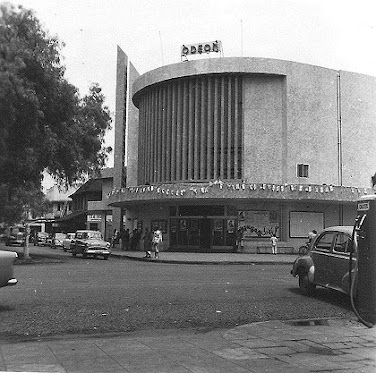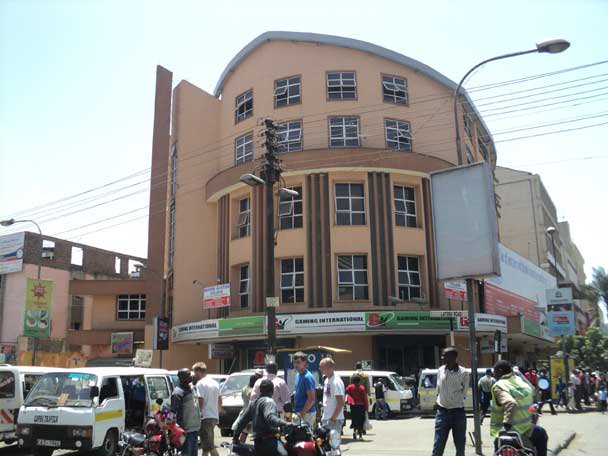As most people know, Mombasa was relatively untouched by WWII. The most extreme case appears to be sirens going off in Mombasa at times, and on one particular day 2 Italian fighter planes flew over Mombasa without much fireworks! Malindi though was bombed!! Ameer Janmohamed provides the following description in A Regal Romance (pg 44):
The Regal Theatre operated during the War, often to a a larger audience as the British Royal Navy used Mombasa heavily during it's war efforts. Both theatre shows and movies played at the Regal. Ameer Janmohamed provided the following description in the book, the Regal Romance (pg 27):
Additionally, as explained by Ameer Janmohamed a free open air cinema near the tusks on Kilindini road was operated for the British armed forces.
I came across a biography of one Navy sailor (Ray Jimmie James) who acted in a stage play of Alladin at the Regal theatre in 1944. Here is his interesting description:
The other big musical event in which I was involved in Mombasa was a production by the Navy Signals Sports Club of the pantomime "Aladdin", the first of its kind in East Africa. For some reason which escapes me, I wasn't too keen to take part, but as it turned out, I wouldn't have missed it. There were so many very clever people involved, stimulating each other to greater efforts, that the whole show became a real challenge and, while rehearsals were putting it together, almost a way of life.
I was convinced that three of the leading characters would find careers on the stage after the war, whilst people responsible for scenery, costumes, lighting etc proved to be equally professional. One of the Club members wrote a basic script; after that it was amended a thousand times as someone thought of a new gag, or a fresh tune to add to the show. It was finally presented at the Regal Theatre, Mombasa on 4th and 5th January 1944, two shows each day.
The principal "boy" Aladdin was played by Wren Irene ("Twinx") Almond and I can remember clearly the occasions when she would stand or sit by the piano, singing a tune I didn't know time and time again until I did know it. (After a great deal of effort by a few people in UK, Twinx was finally run to earth living in Oxfordshire, and I lunched with her at her home in 1993. She and her husband joined our small Mombasa reunion in 1994.) During the production of the pantomime, I was given the lordly title of Musical Director which at the time embarrassed me quite a lot. But looking back on that show, it was probably fair enough - all of us worked relentlessly for many weeks and I think the final standard proved it. Someone tried very hard to get the show up to Nairobi for a couple of nights but there was a war on after all and many of us were watchkeeping so Nairobi missed out.
Interestingly enough, Ameer Janmohamed, in A Regal Romance (pg 42), also describes how non essential residents had to leave Mombasa Island for some time. He describes the impact on the family while operating the Regal Theatre:














